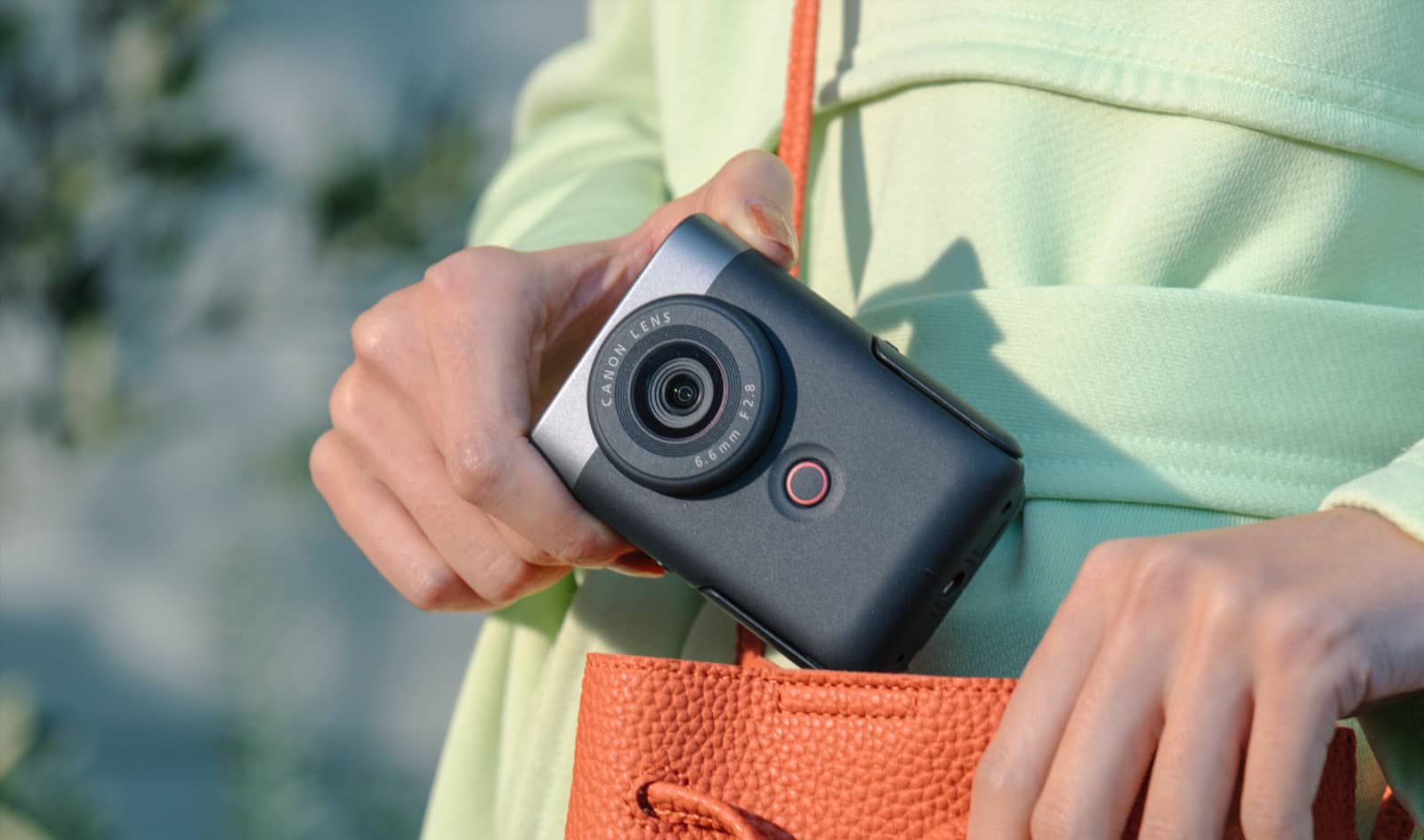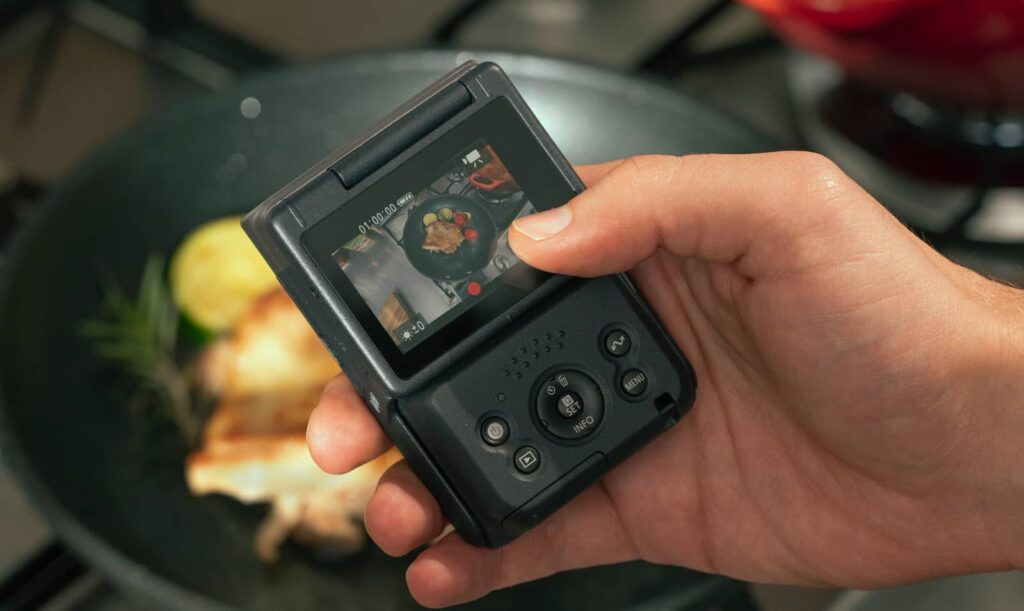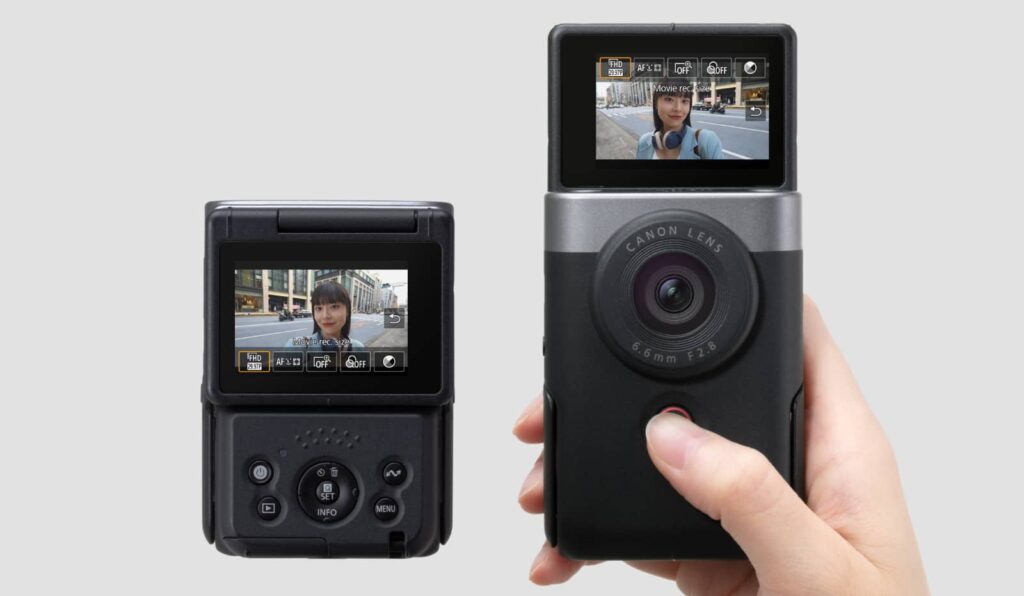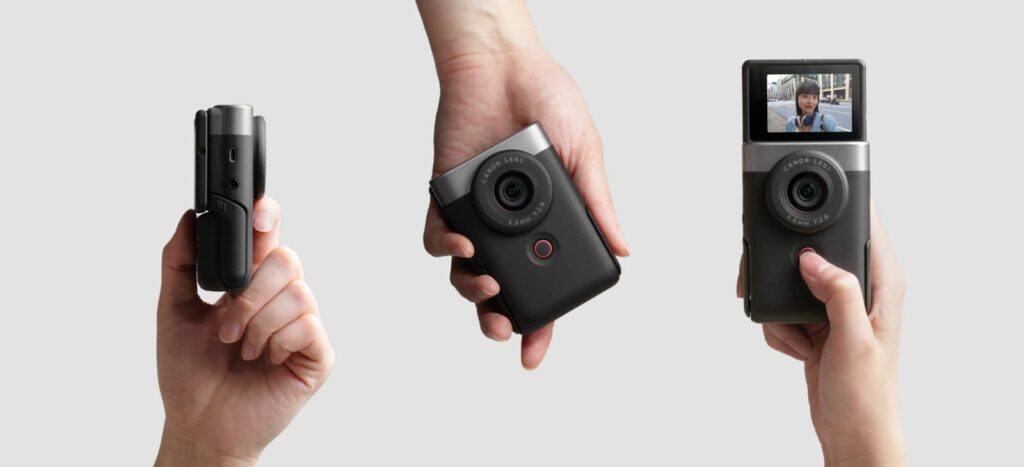Using your phone to take pictures is the norm these days, so how can a camera company convince people to come back to cameras? Make something social.
As good as smartphone cameras are — and they are quite good, replacing dedicated bodies for many people out there — differences still remain. A dedicated camera will almost always have a bigger sensor, possibly better quality lenses, and possibly a little more to work with in both reach and aperture.
Yet despite these differences, smartphone cameras remain the go-to for many of us, with the reasons often coming back to convenience and ability to share easily.
Cameras have seen some adaptation over the years in the form of apps to let you transfer from camera to phone in no time, and the smaller camera size certainly helps, too, but still phone cameras keep persisting as being the go-to.
So what’s the next step?
For Canon, it appears changing the form-factor and making its compact cameras more like a phone, only not.
Canon’s latest camera is the PowerShot V10, and upon first glance, it may be familiar if you bought into the world of social cameras a good decade or so ago when a company named “Flip” arrived to change camera form-factors.
Not quite a phone, but also not a Flip
In truth, the Canon PowerShot V10 isn’t quite a Flip at all, but it does evoke memories of the candy-bar camera that could be its own tripod thanks to the flat base.
The Flip included a camera, a plug, a screen on the back, some simple controls, and could stand up all on its own. The evolution didn’t quite pan out and subsequent models lost the point almost entirely, but the Flip was forever etched into this reviewer’s brain about the idea of a social camera.
And that’s kind of what Canon is trying to kick back off here.
Smaller and including a 2 inch touchscreen on a hinge, the Canon PowerShot V10 includes a 1-inch CMOS sensor capable of capturing at 15 megapixels and recording 4K video, with 14 colour filters and a smooth skin mode.
There’s also a small stand built into the design so it can sit by itself, while support for WiFi and Bluetooth makes it able to connect to phones for remote capture.
It can also be used as webcam for computers, as well, and stream to some social services such as Facebook and YouTube, but Canon confirmed to Pickr that neither TikTok nor Instagram are services the PowerShot V10 can stream directly to natively.
Rather, you’ll need to likely capture video from the camera, either from the camera itself or controlling on your phone, and then edit and upload to those respective services.
And that is largely the point, with the tiny camera made for pockets and social video, bringing two stereo microphones for sound recording with as third to cut back on noise.
A compact camera made for anywhere
It’s different from Canon’s PTZ version of the PowerShot, the PowerShot Pick, which was more like a webcam you weren’t sure of taking anywhere.
By contrast, you could also really use the V10 anywhere, because while social video and vlogging is most of the point of this camera, the PowerShot V10 is a compact camera made to go.
Weighing 211 grams and capable of running for almost 300 shots with a built in battery charged from everyone’s favourite USB Type C connection, Canon is aiming it at anyone who needs a pocket camera to go with a little more capability than a phone.
While phones these days can support 4K video, low-light mightn’t always be good, and there’s support for up to ISO 12800 in a compact body for stills, while 4K movies max to ISO 6400 and Full HD pushes it a little further to ISO 6400.
It won’t beat a larger camera by any stretch of the imagination, and there isn’t any slow motion capability here, but there’s a runtime of one hour for most video capture, with Canon’s “Smooth Skin” mode maxing to five minutes if you need it.
Australian PowerShot V10 pricing and availability
Then there’s the price, and that might be more difficult to convince owners of a phone that can already do some of these things.
In Australia, the PowerShot V10 will cost $699, though retailers may have some flexibility there, and they may need it given this tread on phone territory.
While the support for 4K video on a larger sensor will definitely be a reason to consider the V10, the fixed focal length and lack of support for streaming via TikTok (at least at launch), might make the PowerShot V10 a more difficult pill to swallow for some buyers. Rather, it might sway them to spending on a better phone that does everything, rather than need a compact camera to bolster what they already have.
For folks keen on upgrading their video making experience with a compact properly made to be pocketable, the Canon PowerShot V10 will be available in June for $699.











